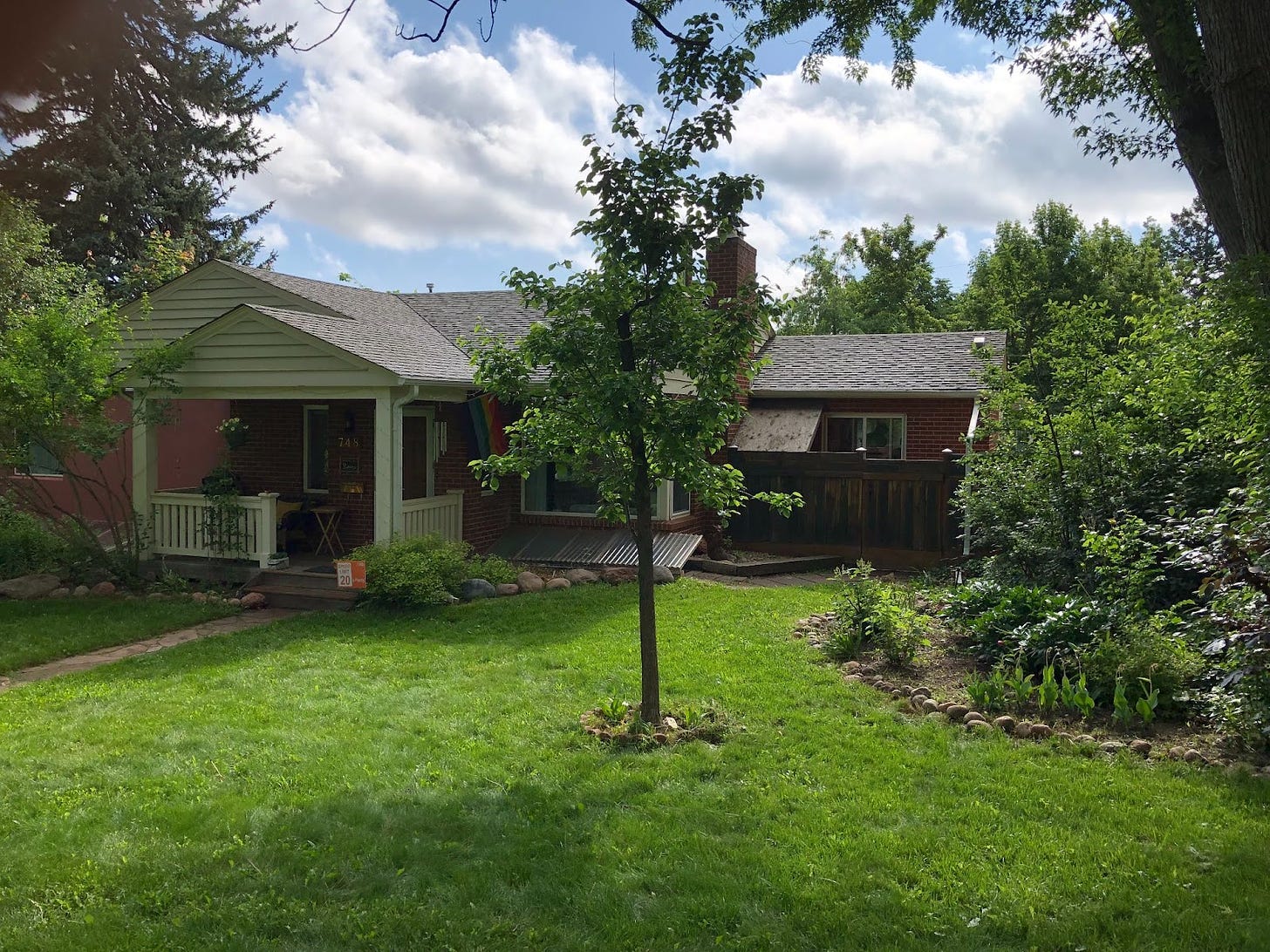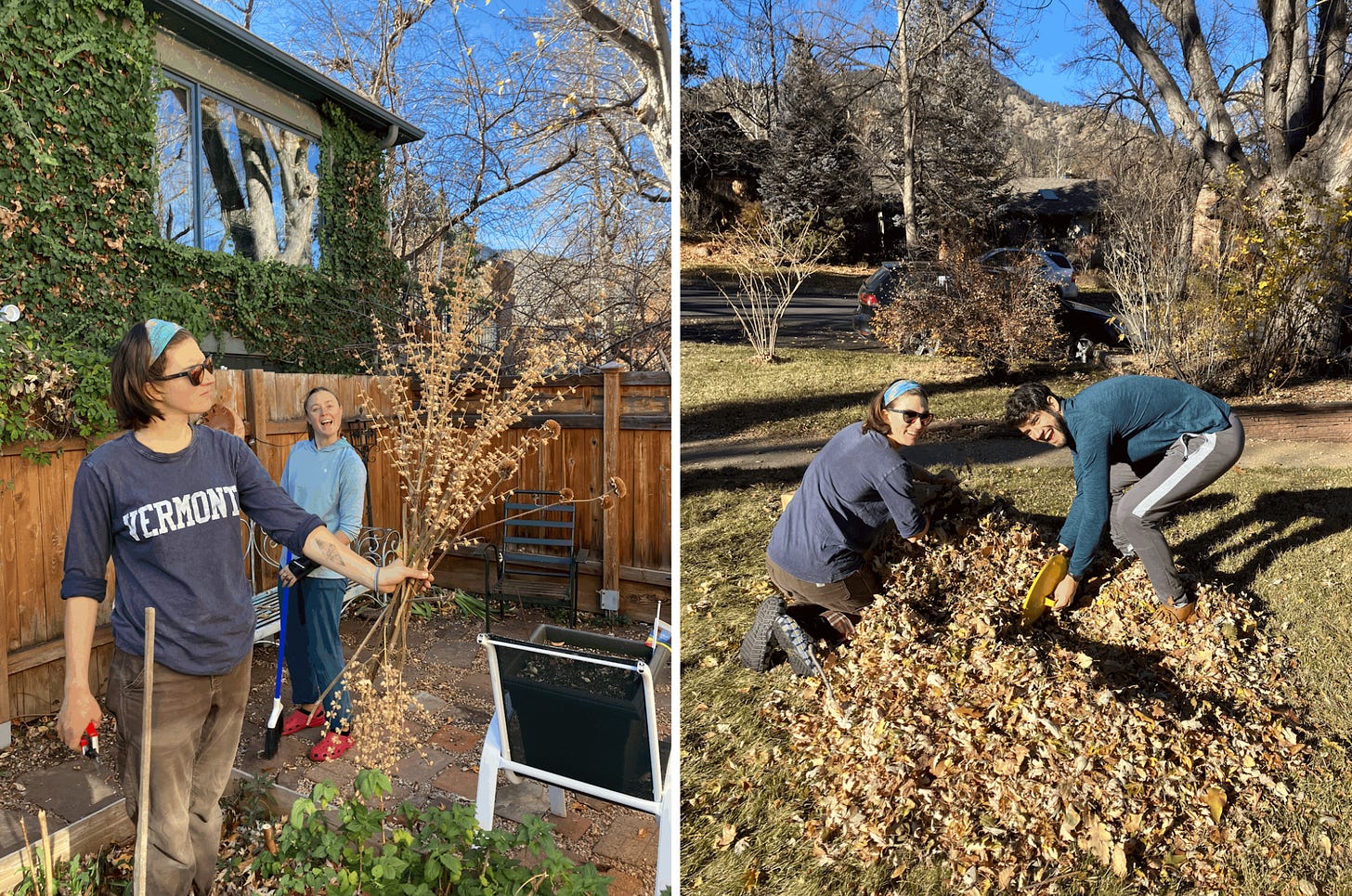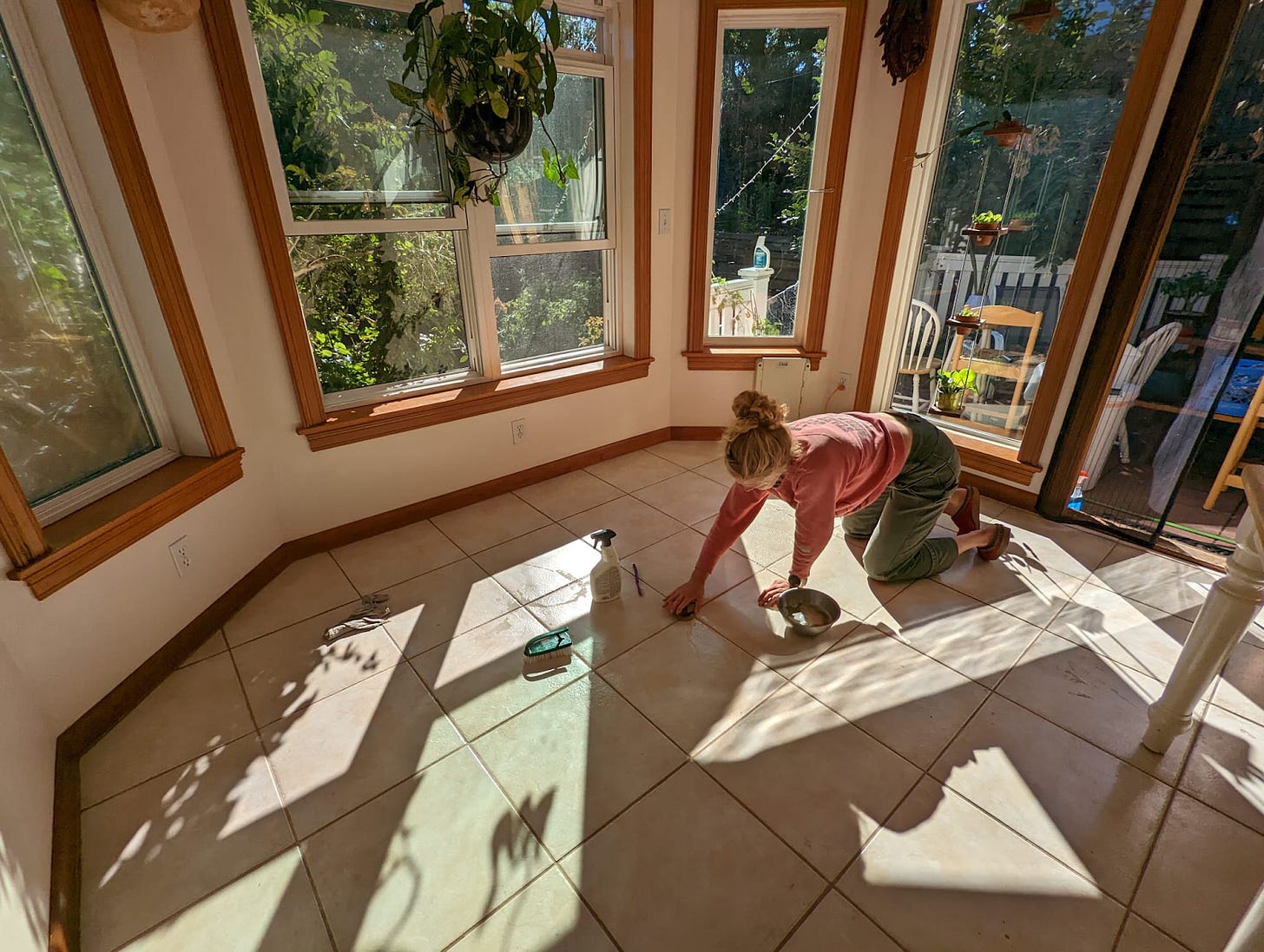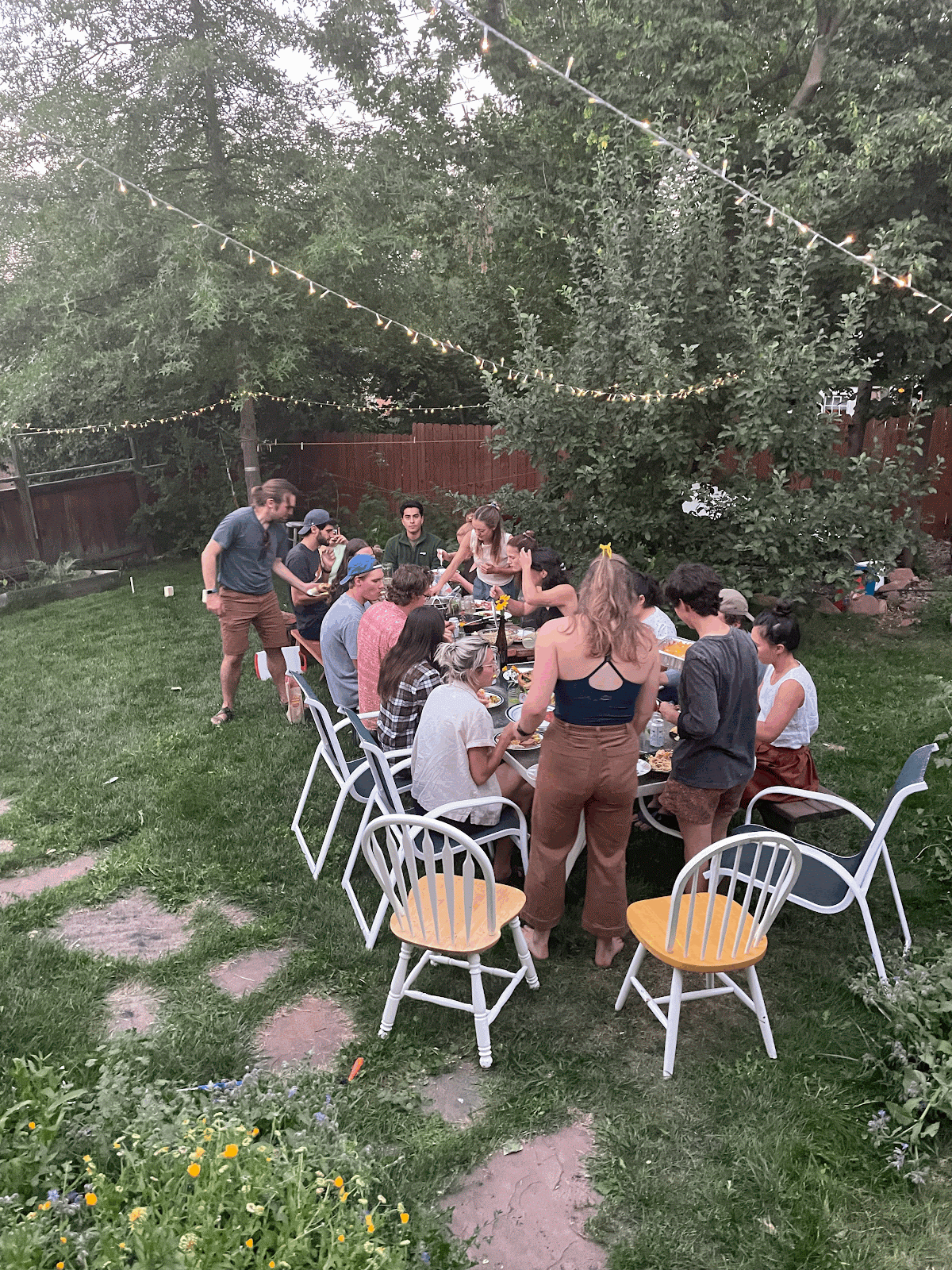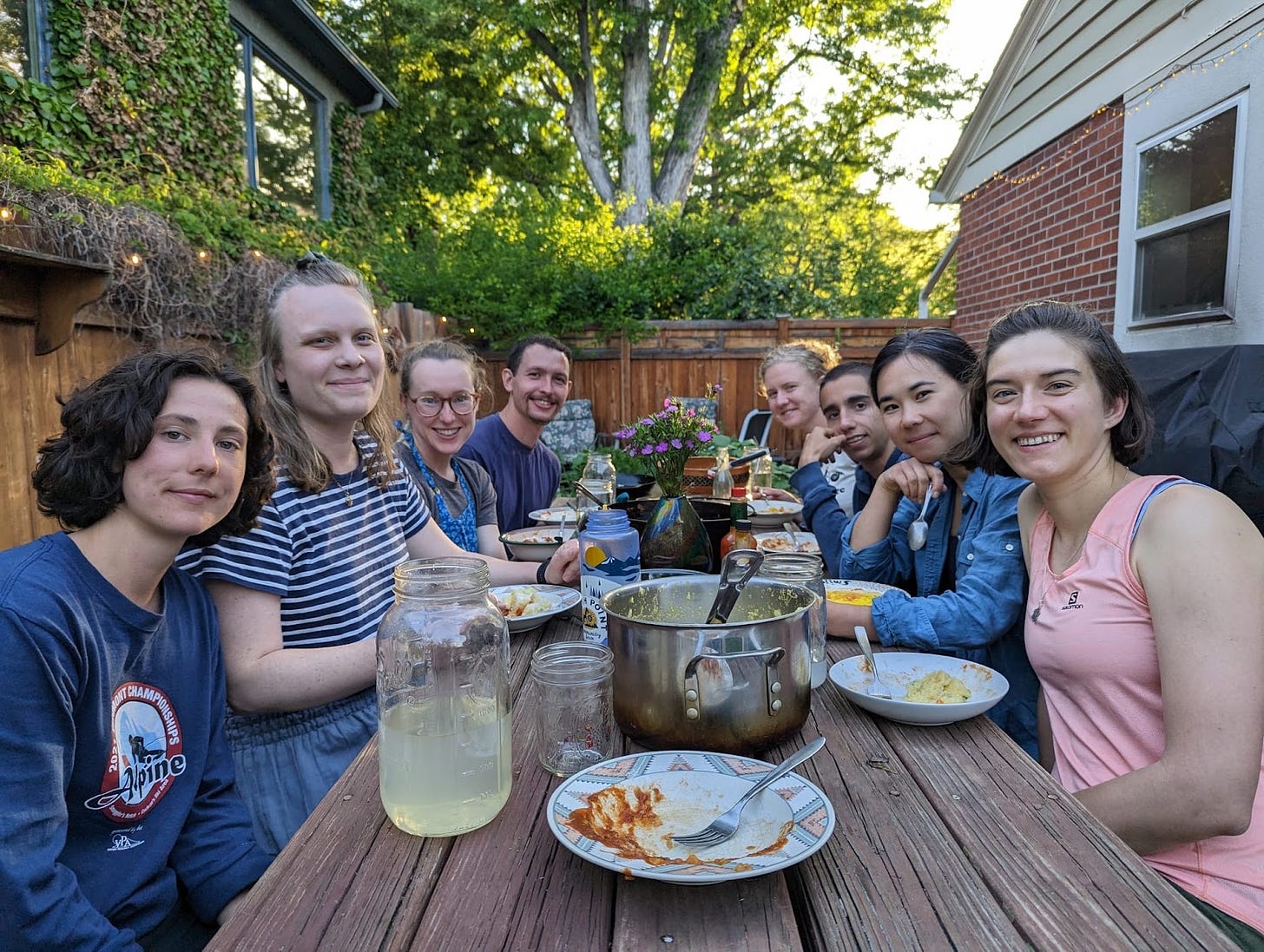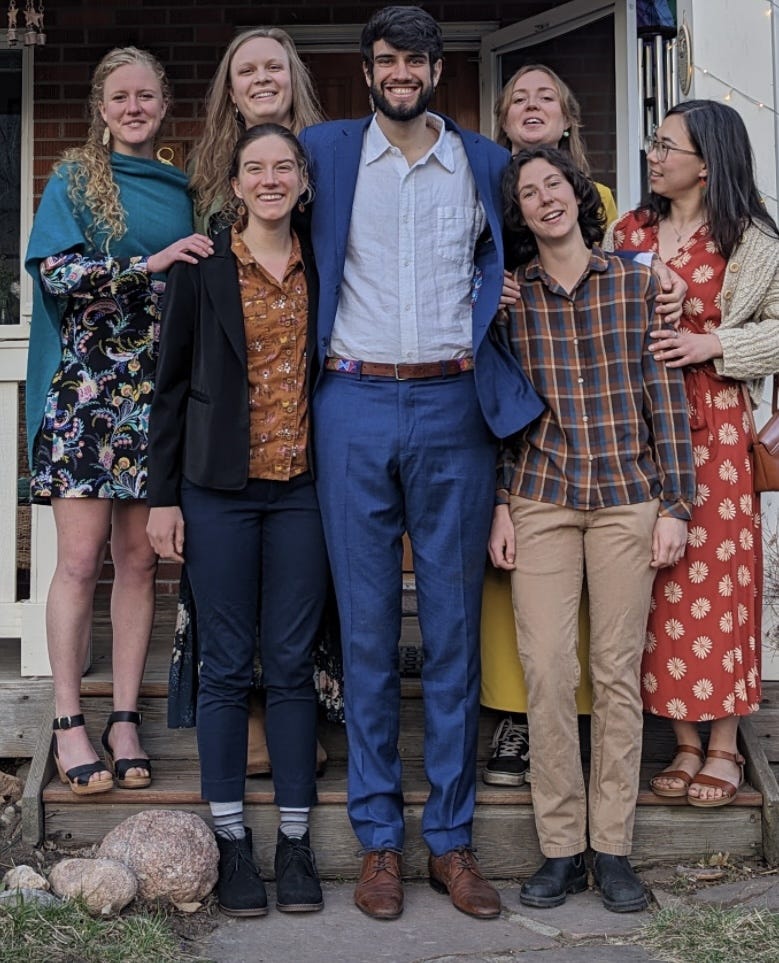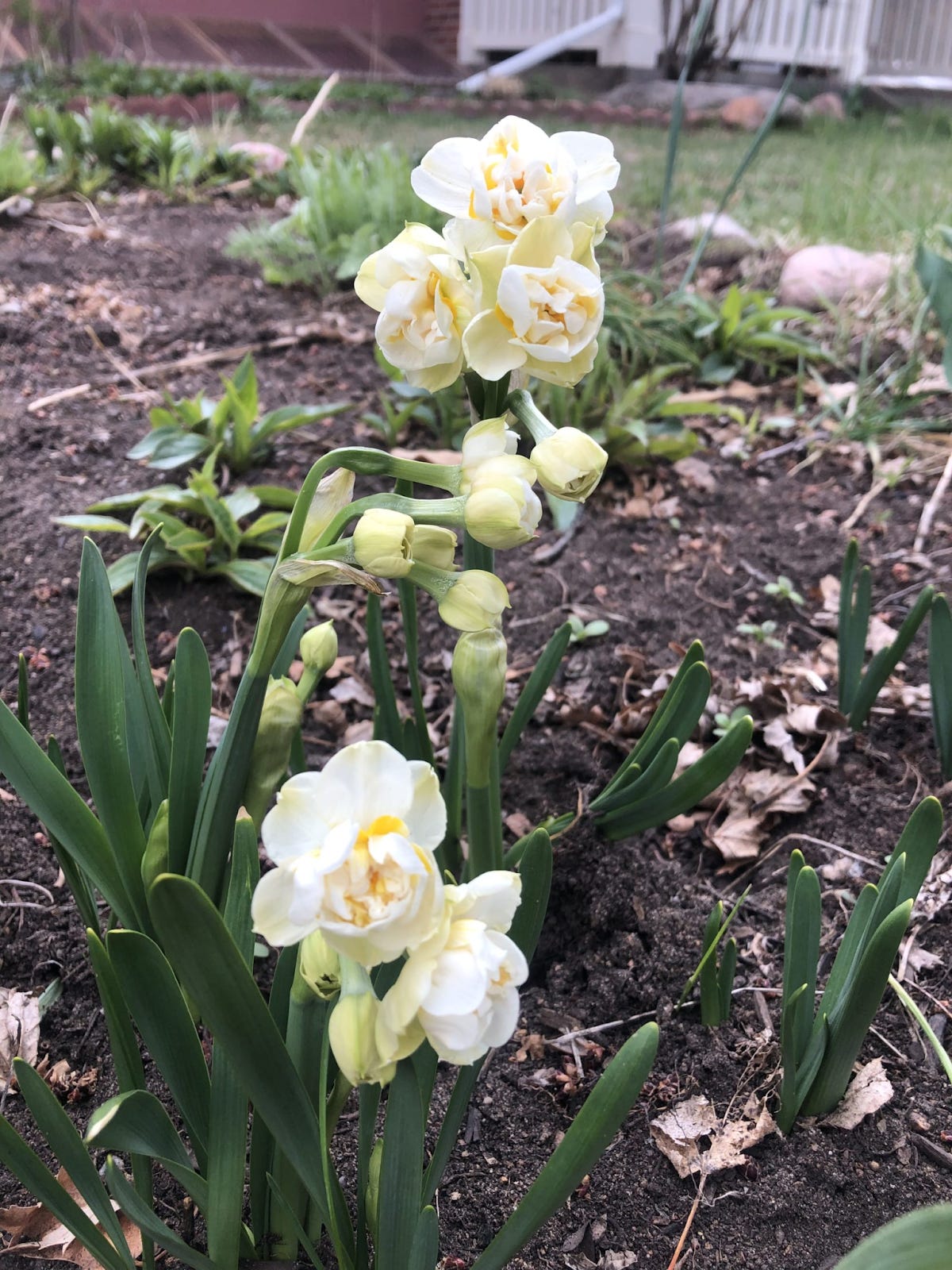From the editors: this is a reader-submitted case study from Brett Bidstrup, Ali Surdoval, and Tess Hamilton of Picklebric, a rental cooperative in Boulder, Colorado since 2012.
They were a part of the larger cooperative (coop) legalization process in Boulder, and continue engaging in coop housing conversations in the community. At Supernuclear we obviously believe that laws barring non-relatives from sharing a home are archaic, so we appreciate the work that all Pickles have done to break down barriers!
Name: Picklebric
Date founded: 2012
Location: Boulder, Colorado
Rented or owned: Rented
Amount of space: 6 bedrooms, 3 bathrooms, backyard with gardens, patio, front porch, living room with wood stove, kitchen, dining area
Governance: We are a member governed coop that uses consensus-based decision making. More significant decisions are made during structured weekly house meetings, while less significant decisions are made asynchronously on our Discord channel.
Origins
Picklebric started as a way to build family along lines of kinship, creative endeavors, and support. Though it has followed many iterations, this largely is still what continues to bring us together many members later.
Why Picklebric Started
One of the original Picklebric members had been diagnosed with ovarian cancer at 22, and decided to create Picklebric as a space for healing: “At 22, I was diagnosed with a cancer caused by poor diet and exposure to agrochemicals. After intensive treatments, I lost my ability to bear children. To cope, I decided to start growing my own healthy food and to build a happy family, even if that family could never be biologically-related”. Picklebric has continued to evolve as an intentional community since 2012 through different iterations of addresses, legal structures, and groups of housemates.
Picklebric was named after the founders’ fondness for pickling food and the conception of the house as “bricolage”, a French term meaning informal construction or the art of assembling found objects (best translated into English as DIY).
Inner workings
We have 13 leadership roles that designate how we share some of the larger responsibilities in the house. Of these, we have two people who oversee our budget and financial accounts. We also have several coordinator positions that rotate every six months to cover an array of lower effort routine tasks. Finally, our house cleanliness chores rotate monthly (more on this later in the post).
Picklebric and Coop Legalization in Boulder
Since 2012, Picklebric has called the Chautauqua neighborhood of Boulder, Colorado home. The coop stayed in its first location for four years maintaining 7-10 members. Technically from 2012-2016, it was an “unlicensed coop” as Picklebric was violating the city’s occupancy limit of having no more than three unrelated residents in a home, which had been a law in Boulder since 1962 (Boulder Beat, 2023).
In 2016, an ordinance was brought forth as a pathway to legalize coops in the City of Boulder. Picklebric residents and community members were strong advocates in this debate, publicly supporting the city’s ordinance for legalizing coops and sharing their experience as an unlicensed coop. Unfortunately, this opened the door for a level of public opposition that they had not previously experienced in the four years that they lived at the location. The pressure from neighbors ultimately convinced the landlord to not renew Picklebric’s lease.
Thus, in 2016, Picklebric launched a search for a new home, eventually finding a place in the same Chautauqua neighborhood. The new landlords were supportive of Picklebric and coop housing legalization in Boulder. Affordable housing is limited in Boulder, and coops offer a sustainable and affordable way to live. In 2016, when the battle for legalizing coops was at its height, 41% of Boulder County residents (not even the city proper) spent greater than 50% of their income on housing, and another 60,000 commuted to Boulder daily, contributing to the city’s “F” rating in air quality (Daily Camera, 2016). Coops became legal in Boulder in January, 2017 as the City Council amended and passed Cooperative Housing Ordinance 8119 (City of Boulder, Co-op Housing).
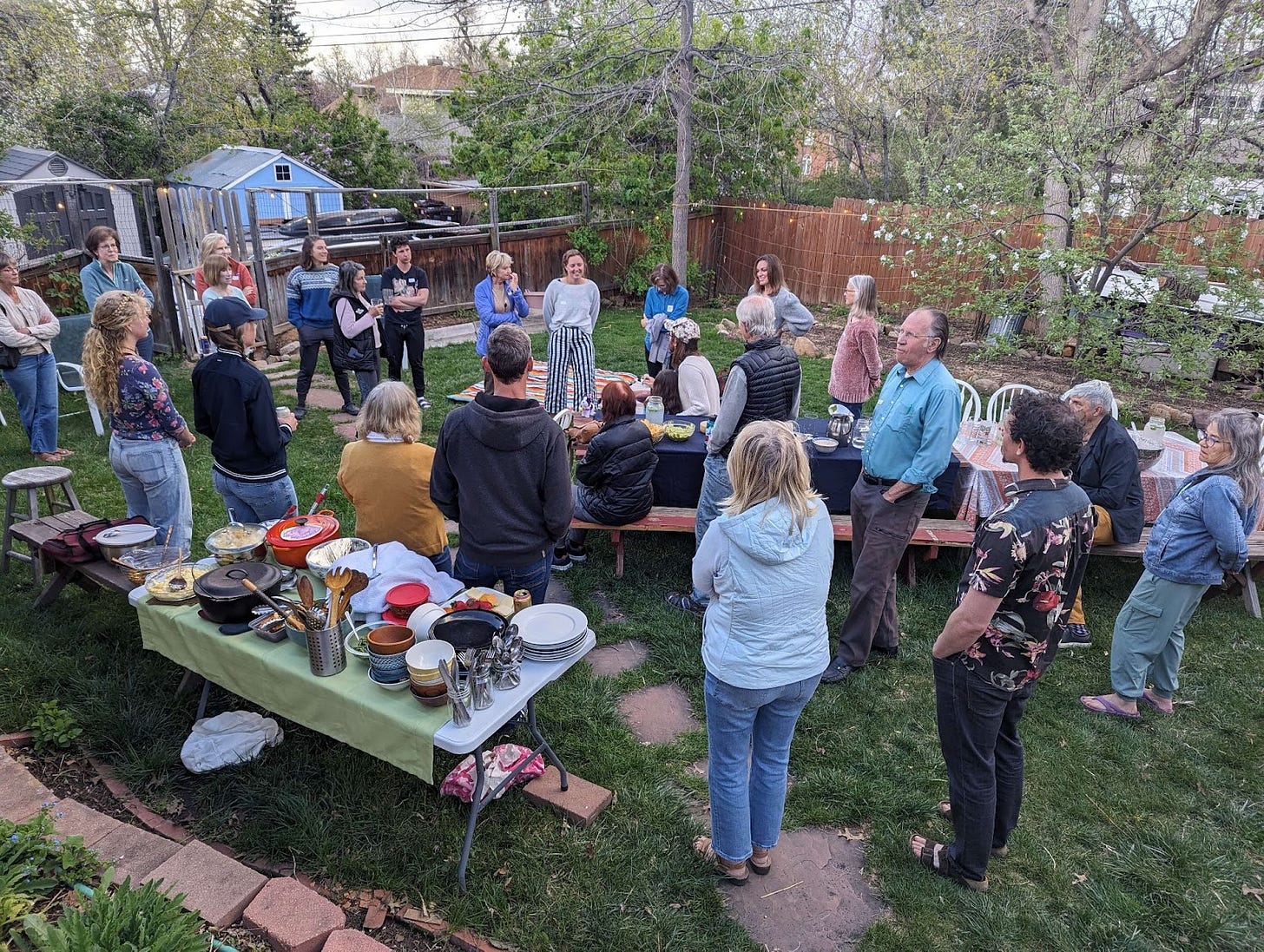
After formalizing a legal pathway for coops, Picklebric’s license application was approved as a rental coop, and Picklebric has renewed its license biannually since the first application was approved. Picklebric has been located in the same home since 2016.
While renting brings challenges around stability, continuity, and autonomy based on the reliance on a lease, renting also comes with less constraints, such as allowing members to belong to the coop with smaller equity requirements.
Supernuclear is a reader-supported publication. To receive new posts and support our work, consider becoming a free or paid subscriber.
Continuity and Structure
Despite member turnover throughout its history, Picklebric could usually rely on some members to carry on historical knowledge and leadership during transitions. However, in summer 2021, Picklebric turned over with a completely new cohort, which raised a serious question of whether or not to continue the coop. With firm commitment from four of the incoming members to take on the transition and additional responsibilities that were tied to carrying on the coop, Picklebric decided to continue operating.
Picklebric has developed a strong underlying documentation system, which has helped keep things running smoothly as members change. We review our overarching Bylaws periodically. Each member holds approximately two leadership roles at a time, and these roles are reallocated based on member interests every one to two years, or as new members join the coop.
Leadership roles include food acquisition, maintenance, membership, accounting, public relations, and harmony stewardship, amongst others. At the next level, we maintain coordinator positions that rotate biannually. Examples of these roles include plant care, mail steward, car coordinator, and fire steward. The purpose of coordinator positions is to fill labor gaps that arise between leadership roles and chores. For weekly or daily labor, we have a set of chores that includes cleaning floors, maintaining the outdoor spaces, and cleaning the refrigerators and freezers. Finally, we have biweekly labor sign ups for cooking house meals, picking up food orders, and dumpster diving.
We meet for one and a half hours weekly to discuss house business and be in each others’ company. With this structure, Pickles are expected to contribute five to seven hours of labor toward the coop each week.
In recent house conversations, we have also discussed that parts of how we live can become overly structured or engineered when we may just need a cultural shift without the written element. [editor’s note: see Phil’s excellent post on Rules vs. Principles here]. One core document to who we are as a coop is our Bylaws. Our Bylaws serve as our north star, guiding the direction our coop moves towards and the standards to which we hold ourselves both individually and collectively.
Bylaws Mission Statement: Picklebric is an exploration of collective possibility. We seek to discover, test, and nurture the potential of communal living by cultivating a home that is nourishing, cooperative, and affordable. By focusing on consensus-based decision-making, skill and resource sharing, communication, and friendship, we aim to live more thoughtfully and joyfully, maximizing our potential and minimizing our carbon footprint. We live by our values, we support each other, and we remain open to change and growth.
You can read the full bylaws on Picklebric’s website here.
Sharing food and coming together over meals is a central part of our community. We purchase all food collectively, prioritizing local and organic sources by shopping at the farmers’ market and participating in community supported agriculture (CSA) throughout the year. Picklebric eats three meals together per week.
Lessons Learned
Picklebric, like so many community living places, is not only a site for rich living but also rich learning. One Pickle (an affectionate name we have given ourselves as members of Picklebric) shared:
“Living here has taught me how much having a space where direct communication, generosity, commitment to community, clear expectations, and intentional cultivation of joy can bring so much safety, stability, and healing into my personal life. I can show up as a whole person and still be loved. Small daily interactions with people (making breakfast together in the morning, brushing teeth at night, co-working in the living room) can culminate in deep, rich relationships. Having clear boundaries with people allows you to be closer to them.”
As we thought of offering some stories and snippets to share, we asked each current member to write about their personal lessons learned. Those responses were the raw material for what is woven below.
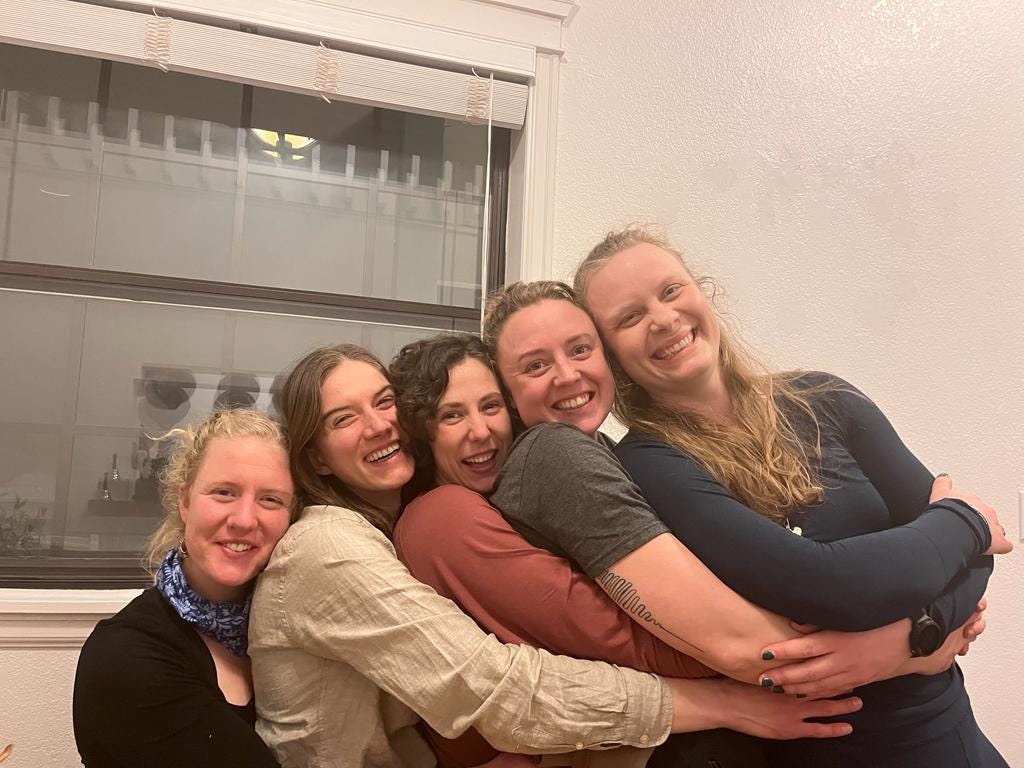
Intentional Facilitation and Communication
One of the ways we shift both the structures and culture of Picklebric is through intentional facilitation. One member shared one of the biggest things they learned about communication in community was: “sharing concerns early on before they turn into resentment.”
One example of this is our harmony steward leadership role that has led bi-annual one-on-one check-ins. We take time to reflect on what we appreciate, observe, and would ask for change from each of our housemates. Then, we meet with each member of the house to share our reflections.
Before our weekly meetings, we share check-ins about how we are doing that week, what kind of support would be helpful, and how we are arriving to our weekly meeting.
“We are learning about what it means to create an environment where there is discussion, debate, even disagreement - which are all natural to social groups - but everyone feels equally welcome to participate and respected. It’s very valuable to see and hear how in a house that cares deeply, we still have be very intentional to avoid and dismantle non inclusive patriarchal norms.”
Recently, we had a substantial discussion around our labor distribution, visibility, and equitability. We realized we needed to revisit how different types of labor are shared. We designed a five-week facilitation process to clarify the aspects of our community that lead to wellness, reflect on our personal contributions and shortcomings, and only then come to collective solutions in actionable ways.
“That people's needs and desires might not always align perfectly when living together, but that it is possible to find common ground and paths forward that feel good for everyone involved. By having a community with different experiences, backgrounds, and ways of interacting with the world, collectively there is a huge wealth of knowledge, connections, and access to resources in our home.”
The Power of Ceremony and Celebration
Beyond the five to seven hours of labor that we contribute to our coop each week, we put a good deal of emotional labor into how we hold ourselves and support one another. However, amidst it all we also have realized the importance of coming together to have fun as well as doing business. We recently committed four meetings a year to house bonding, in an effort to value house morale in addition to the commitment of time to meetings and business. We also take birthdays quite seriously in this house and use them as a chance to celebrate each individual!
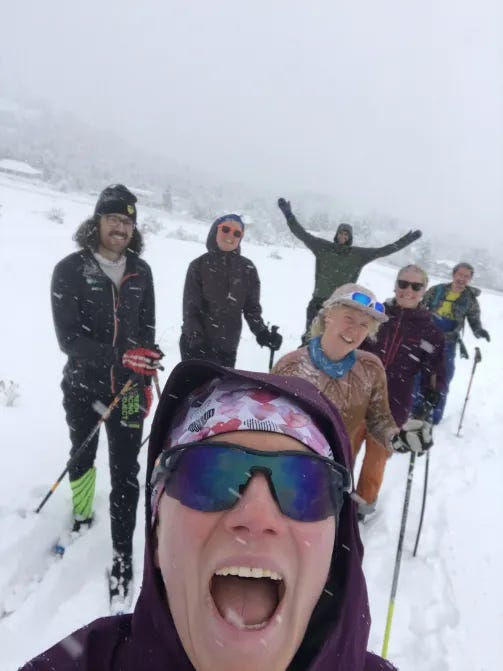
Beyond This Community to Others
One of the biggest lessons learned for all of us is the potential of community and how that applies to each of our lives now and beyond. One Pickle stated this well:
“This creates an opportunity for a new type of relationship that is difficult to come by in life – people who truly know us that can challenge us to be better versions of ourselves while creating a safe space to mess up every once in a while. Most people only let in their life partners and maybe one or two other people on this most raw version of ourselves. Having more people understand us in this way spreads the burden of helping each other grow and exposes us to wider ranges of ways of thinking.”
Some of us arrived to this community after living in an intentional community in childhood or college, but for the majority of us, this is the first time we have lived this way. There are many of us who have reflected how helpful it has been to think of how we relate to one another in the house and how that contributes to other relationships:
“Communicating and sharing labor at Picklebric has also significantly affected (in a positive way) my communication and labor sharing in partnership, lessons that will carry beyond our time at the house.”
Though there is much that is required, there is an overwhelming sense of richness and abundance, the social and care web we are held in, the delicious foods we eat, and the beautiful place in which we are able to live.
Curious about living with friends, coliving or co-buying? Find more case studies, how tos, and reflections at Supernuclear: a guide to coliving. Sign up to be notified as future articles are published here:




